Have you ever seen a chess puzzle that you don’t know what to do in that position? or not knowing where to start thinking about it? or you select a move and you think this was the best move and then see it was wrong? Here, I try to introduce a systematic way to analyze chess puzzles and solve them. This can be used as a framework, so right after you see the position you know exactly where to start and check for alternative solutions.
Disclaimer: This framework works pretty well to achieve puzzle ratings aound 2400-2800 on “chess.com” puzzles. I am not a professional chess player, although I have been playing chess on and off my entire life. I am just trying to show the generic problem solving framework is applicable even on tedious chess puzzles. You can find my “chess.com” profile Here!.
My intention here is to show the importance of he process and framework of problem solving, rather than teaching a chess lesson to you.
Problem solving overview
Chess puzzles are just one specific type of problems that we can apply the genric problem solving framework to solve them. So, before getting into chess puzzle solving let’s take a look at how we solve problems in general.
We are pattern recognition beings. We are good at recognizing patterns. Pattern is a connected chunk of information or facts that makes sense to us as a whole and is consolidated in our brain as a single piece of fact or information block. This consolidated pattern can then again be combined with other patterns to make new patterns.
When we solve problems, what we do is basically combining differet patterns to come up with new patterns. The process of combining the known patterns to build new patterns happens in our working memory. Our working memory ahs limited capacity for information blocks (patterns) that it can hold and process at any given time. The average working memory capacity is somewhere between 3-4 to 6-7 blocks. So, to solve problems we continuously combine a few (1-7) blocks of information (patterns) to come up with the ultimate pattern that solves the problem.
We can immediately understand the importance of knowledge (patterns) stored in our long term memory in the brain and their accessibility of them for problem solving. The more patterns we know and the more consolidated they are in our brain, it will be easier for our working memory to access these patterns, process them and come up with new patterns which solves the problem.
Now we are ready to get back to chess puzzles problem solving process. Here, I introduce a five step method:
- Step 1: Identify potential objects from position and knowledge
- Step 2: Identify patterns from knowledge
- Step 3: Identify patterns from position and weaknesses
- Step 4: Rearrange patterns to objectives to find the solution
- Step 5: Reiterate with different objectives and patterns
Start from the most important weakness if it does not work get back
To illustrate the points I use the following puzzle to solve. It was very difficult to find a good puzzle for this article. An easy puzzle would have not been enough to show the points. A difficult one, would have caused frustration to follow it along.
The puzzle to solve
The puzzle I use in this article is the one you see below. White plays the next move, which is capturing the the Bishop at h3 and then we have to find the best sequence of moves for black.

Step 1: Identify potential objectives
The first natural problem to solve, is to find the problem to solve. You must understand if you are looking for a mate, capturing queen or gain minor piece advantage or any other strategic or tactical advatage. In some positions (very often) this could be the most difficult part of the puzzle.
Here I try to provide a list of potential objectives at different stages of the game. The list is not exhaustive of course, and only covers the patterns I have seen so far and I remember.
In the opennings the typical patterns include:
- Trapping the advanced Queen
- Gaining the material advantage (usually by checking and attacking the rook)
- Early mate for a trapped King
In middle games, which is normally the most complicated position due to several number of possibilities:
- Mating nets
- Winning material
- Trapping a Queen advanced into opponent’s territory
In end games:
- Mating
- Promoting pawns
- Sometimes it is needed to exchange pieces before trying to promote the pawn
In the example we use here, there are three potential objectives can be envisioned.
The first is to use the Knight’s fork to capture Queen in exchange for the Rook. Then the Knight will be taken in the next move. Note the white’s passed pawns which will be very dangerous. So, this is not the objective we can consider first.
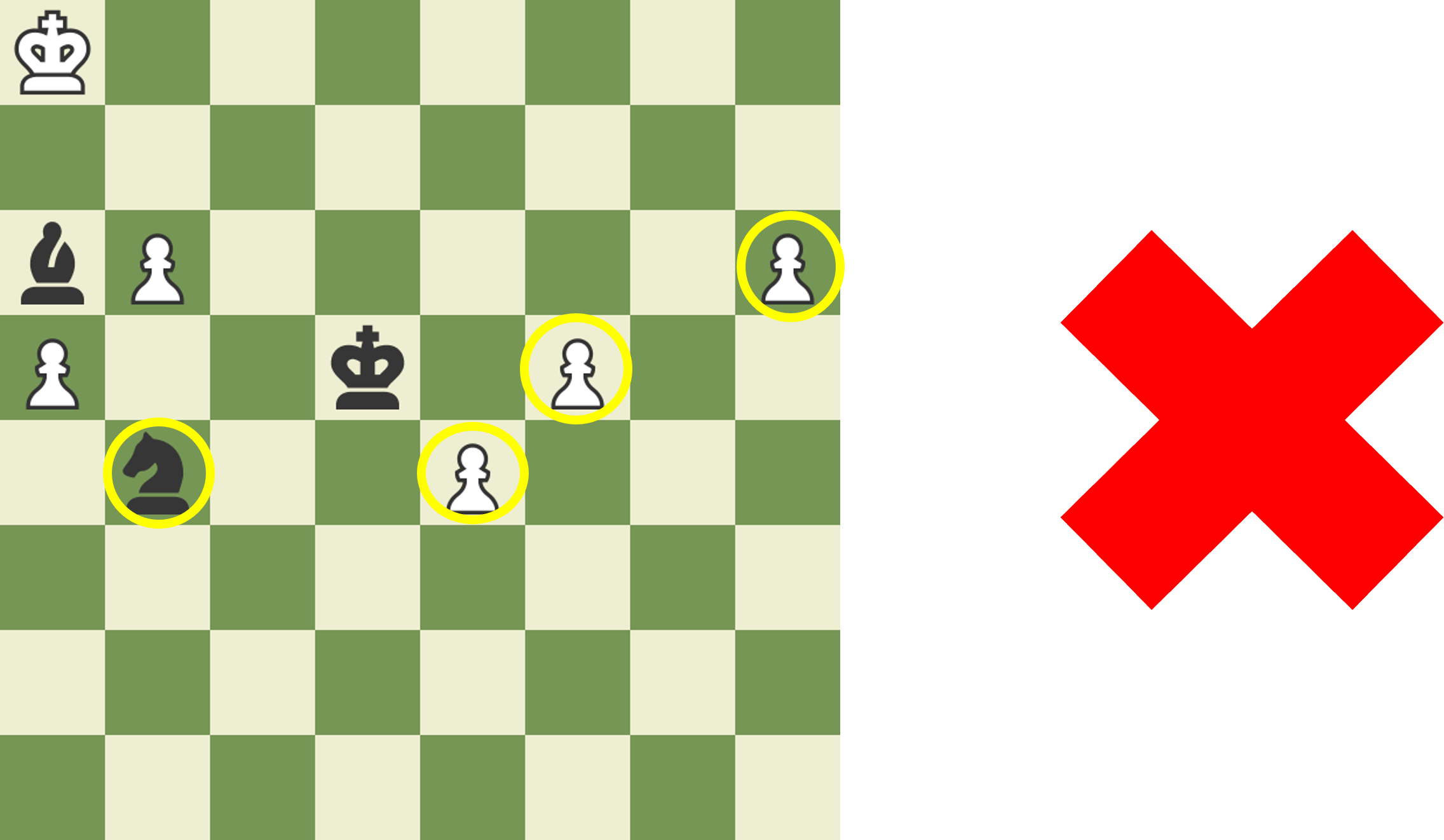
The seond potential objective is, to go for a mating by the Rook and the Knight. Since, the white’s Queen is in the very good position and black’s King is unprotected the black’s first move must lead to a forced move. So, for mating net the Rok must start by checking the King. You see the calculations below which shows this is not a good objective to follow at this stage. Note that, how thinking in chunk of moves and patterns helps to speed up the calculations instead of thinking in individual single moves calculations.
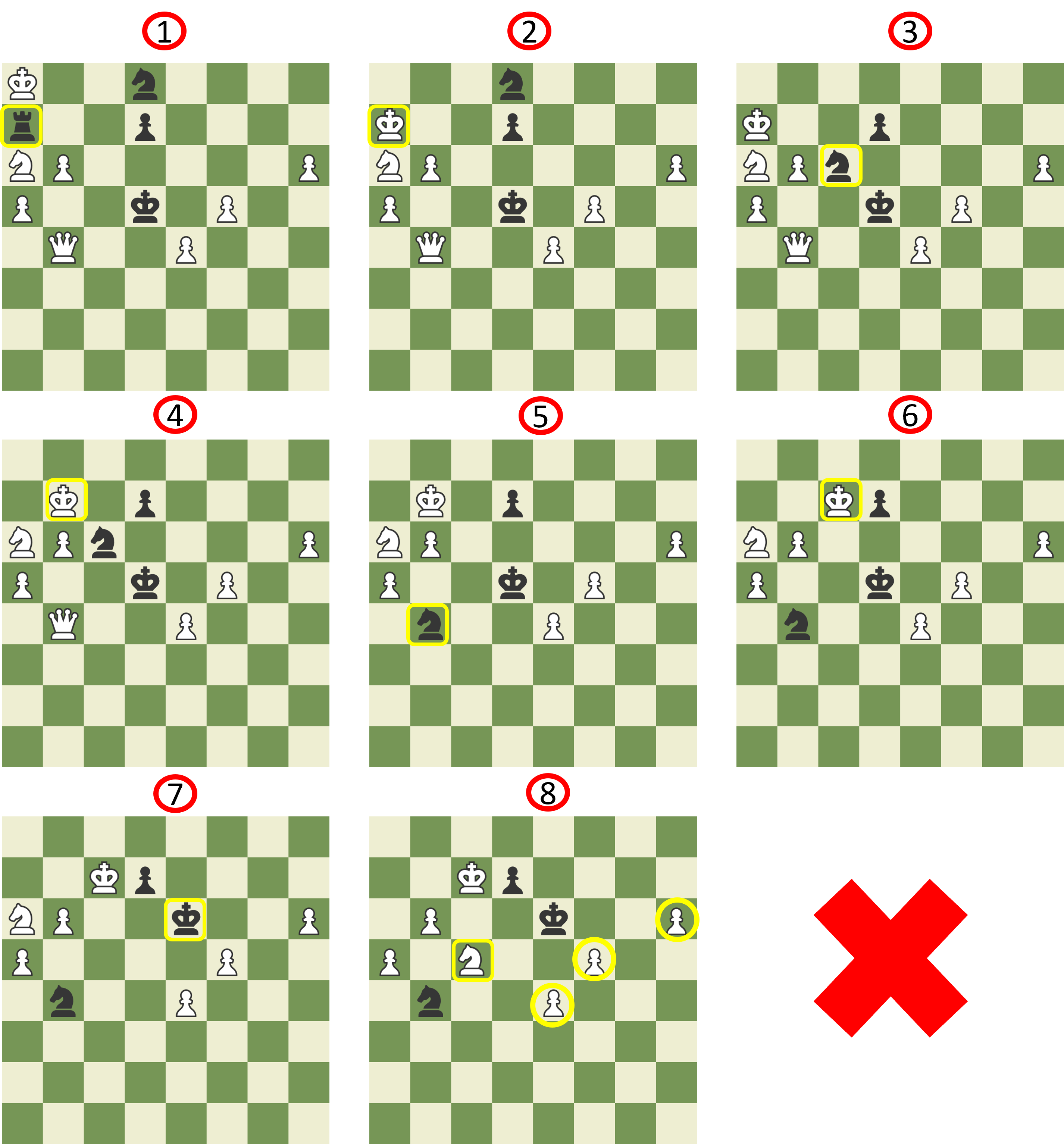
Finally, the last potential objective is to promote the pawn. This at the moment, seems the desired objective to pursue.
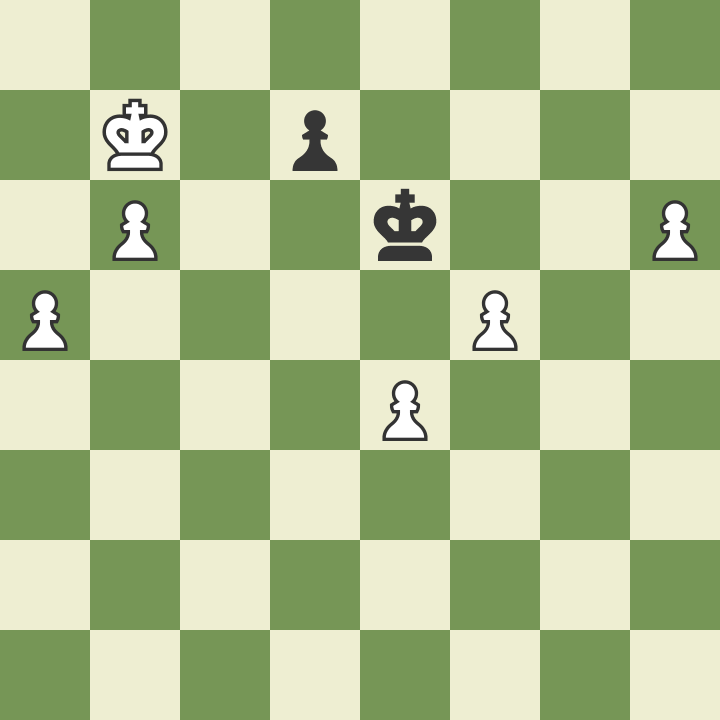
Now, we have the problem to solve so let’s see how we can solve it.
Step 2: Identify potential known patterns
looking at the position you must try to intentionally remember from your previously learned patterns the potential blocks of moves (patterns) that can help you to gain any type of advantage. These are including:
- Well known tactics such as fork, pin, etc.
- Middle game mating nets such as trapped King checked with a Knight.
- End game mating patterns with different pieces. Queen and King mate. Rook and King mate. King and two bishops mate, etc.
- End game pawn structures and moves. 1v1 pawn structures. 3v3 pawn structures, etc.
- Openning tactics and patterns such as classical and famou opennings.
I would recommend to start from simple patterns. For this reason it is better to start by learning end game patterns first. One example is to start by learning end game patterns with one pawn and kings left. Then moving on to learn patterns with two pawns left and move on to learn more complex patterns.
You can see the two patterns identified for our puzzle below.
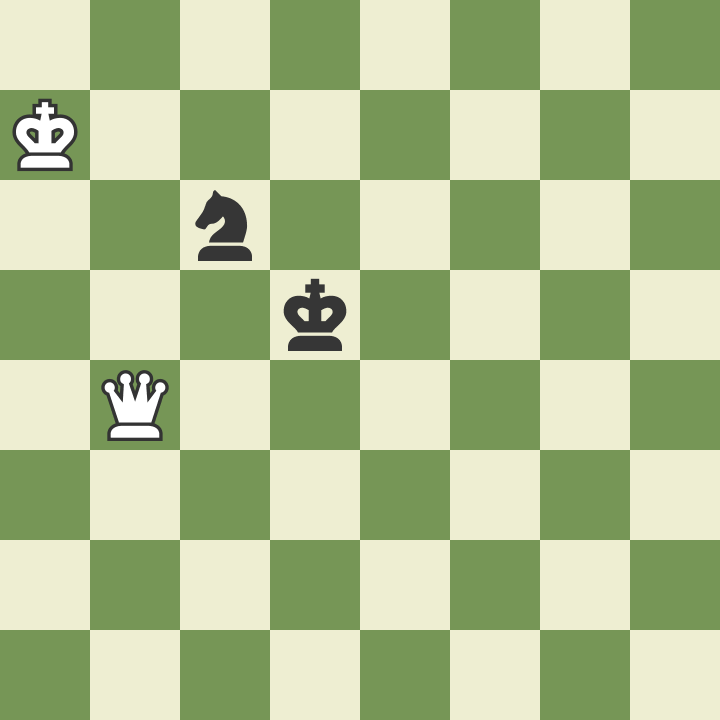
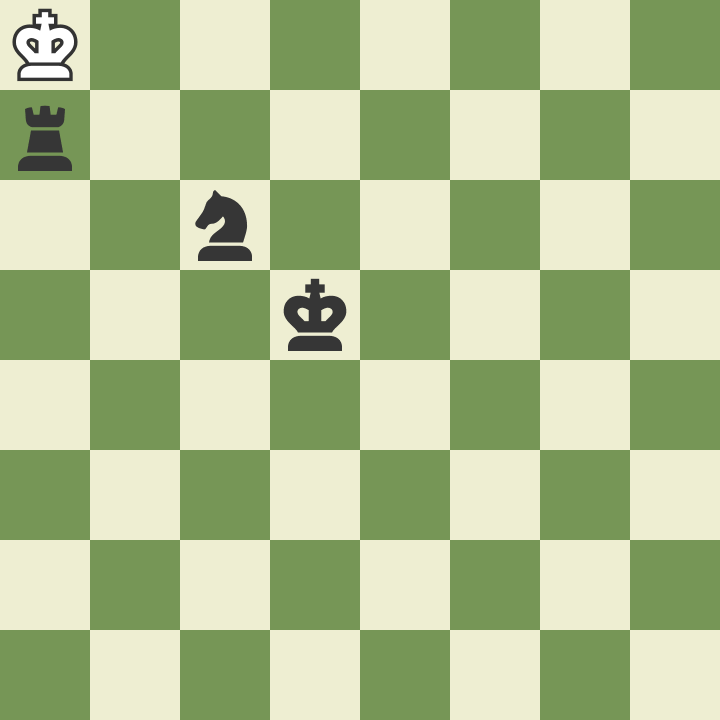
So far, we have identified the problem and used our previous knowledge of patterns to identify potential ptterns that may contribute to the final solution.
Step 3: Identify strengths and weaknesses
Up until now, we have been relying on our knowledge of memorized patterns to collect potential patterns for our puzzle. Now, we must look at the puzzle at hand to see which one of potential patterns are possibly applicable to our position. I try to clarify the point. In the last step we looked and we saw that the black’s Knight is close to white’s King and Queen, suggesting the possibility of fork. In this step we actually examine the board and the puzzle to see whether the fork is actually possible here.
A few examples of possible weaknesses are:
- Space limited pieces (specially King and Queen)
- Potential tactics
- Unprotected pieces
- Pieces with less defenders than attackers
- Undefended squares
- Weakly defended squares
- Weak diagonals, files and rows
The weakness of the opponent is our strength and vice versa.
Below, you can see the weaknesses of the puzzle we want to solve.
The pawn about to be promoted.

Potential Knight’s fork.
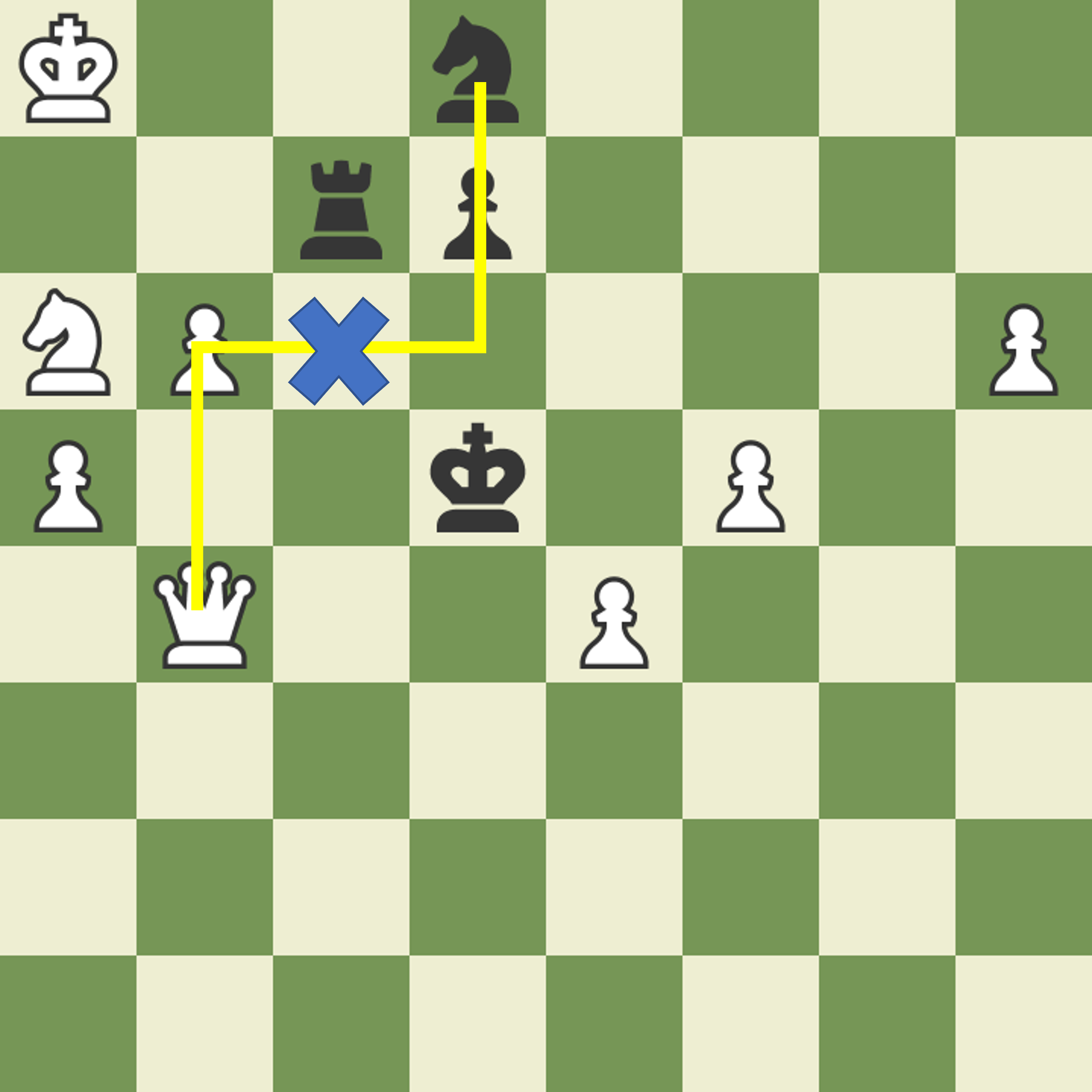
Trapped King.
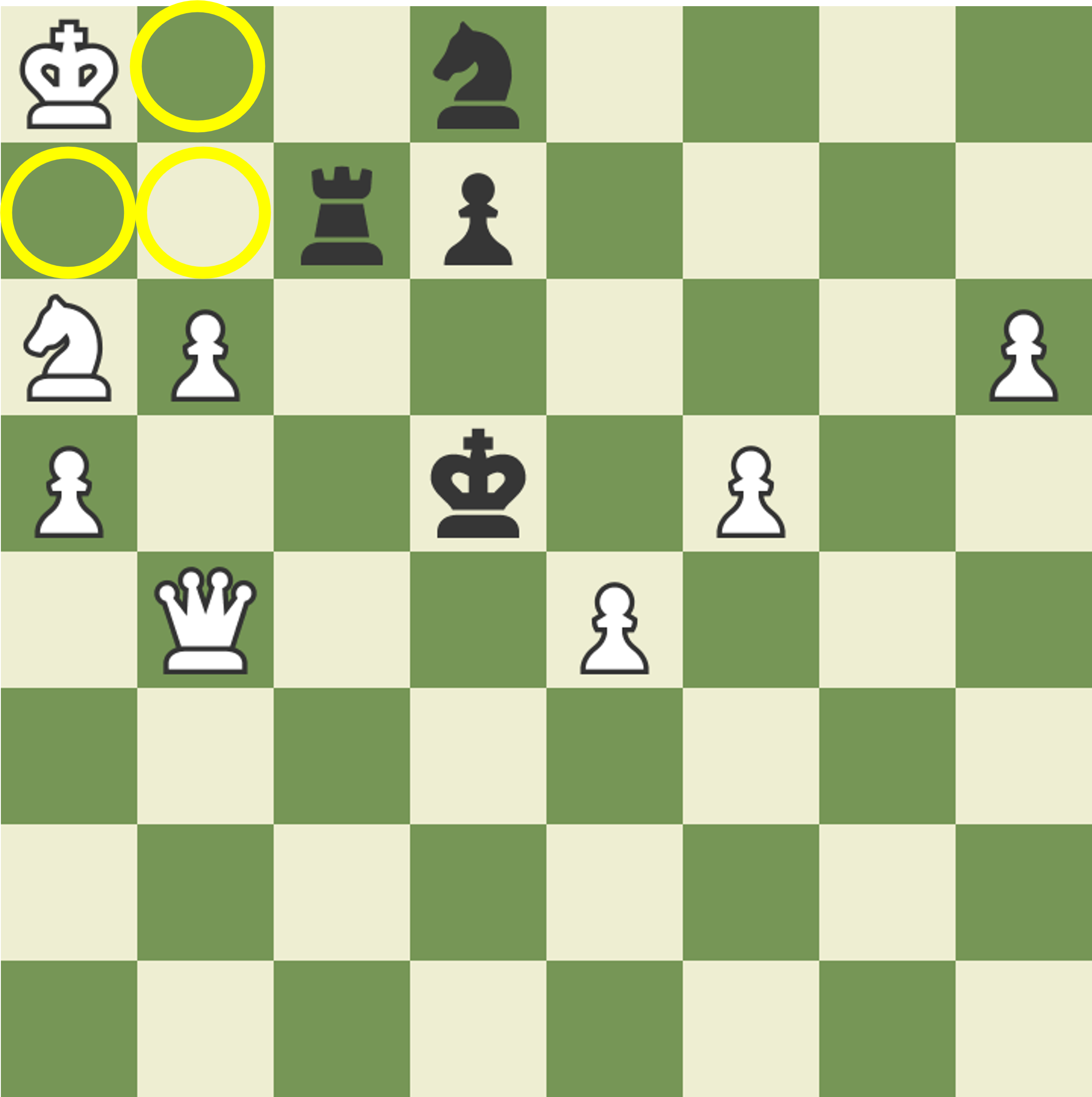
Knight can join to add to attack the pawn.
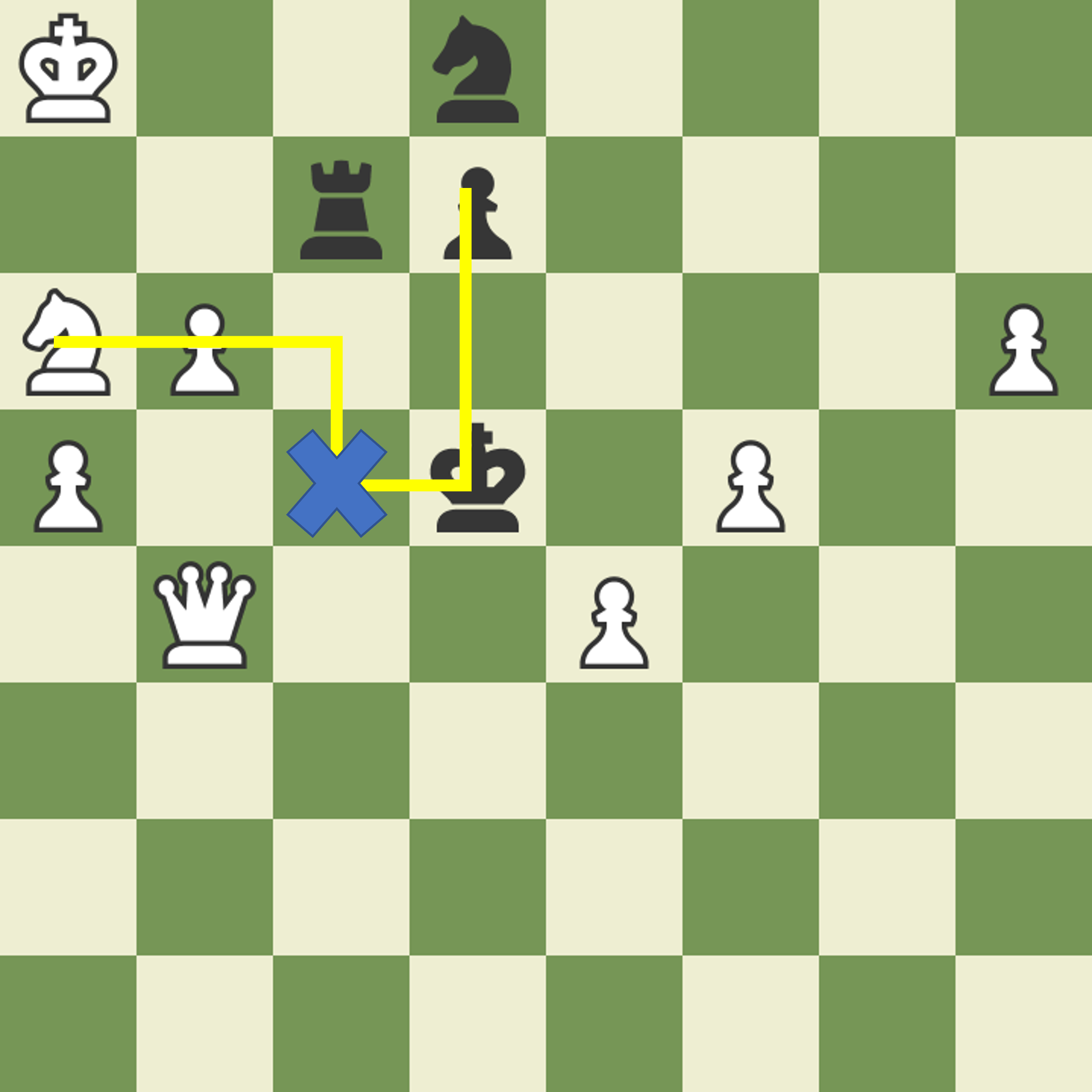
White’s strength is the passed pawns.
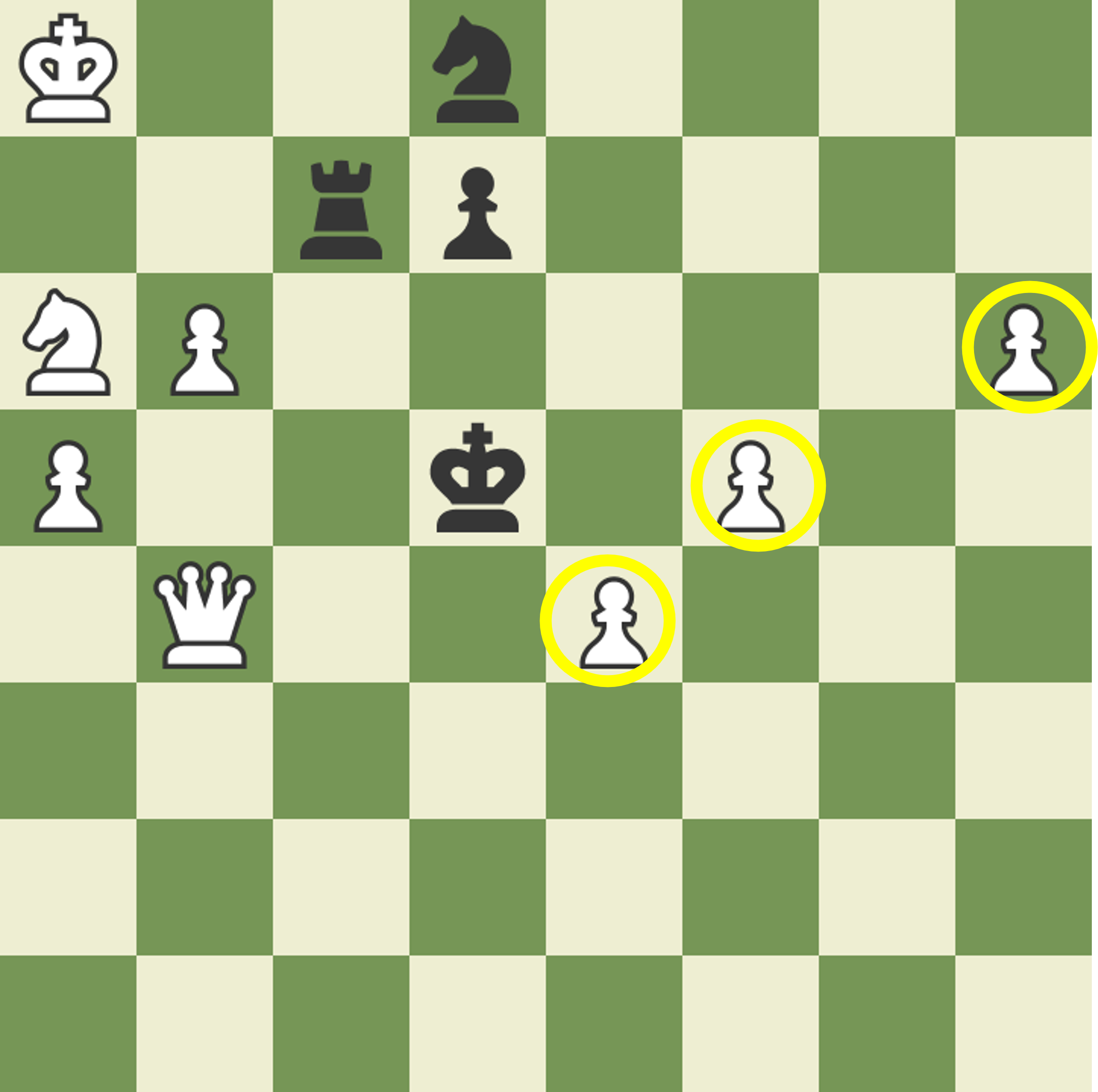
King is rather far to attack the pawn.
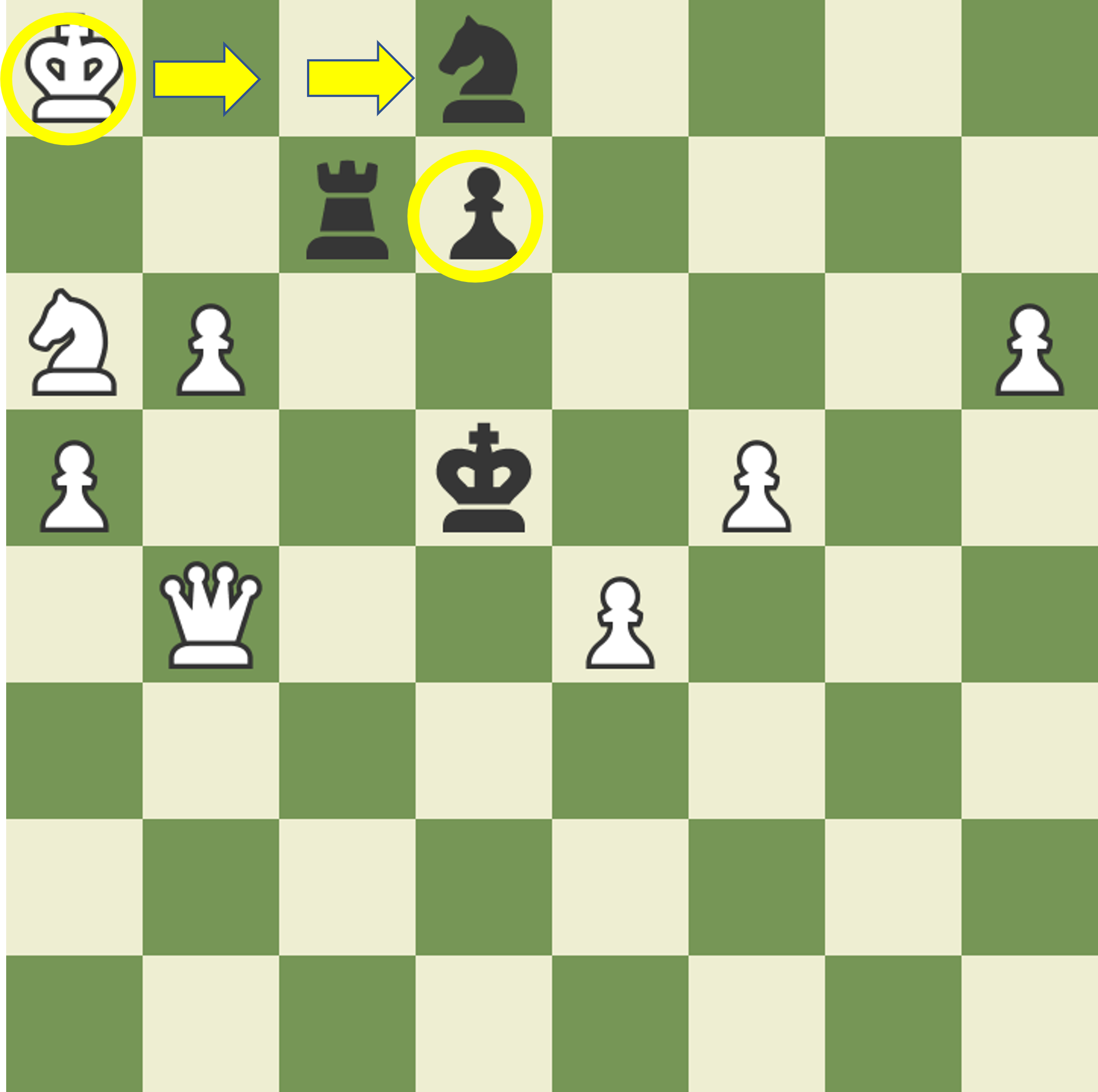
Now, we have all the pieces we need to solve our puzzle.
Step 4: Calculate and rearrange to connect small patterns to objective
Remeber we said that we combine different patterns to find the final solution. Now, we have all the patterns and building blocks that we need. It is time to put hem in sequence and combine them to come up with the final solution. If we try with a combination of patterns and not getting the result we want, then we must consider rearranging the patterns ad single moves to find the solution. At this stage, also we should be relying on our pattern knowledge to make the arrangement process faster.
If we want to improve our puzzle solving ability, we have to try to expand our knowledge base of patterns as the first step. Then after solving each puzzle to look how could we solve it faster or where we made the mistake. We must strive to identify irrelevant patterns and combinations and eliminate them from our analysis calculations to find the solution faster. This must be the intention of our deliberate practice of problem solving.
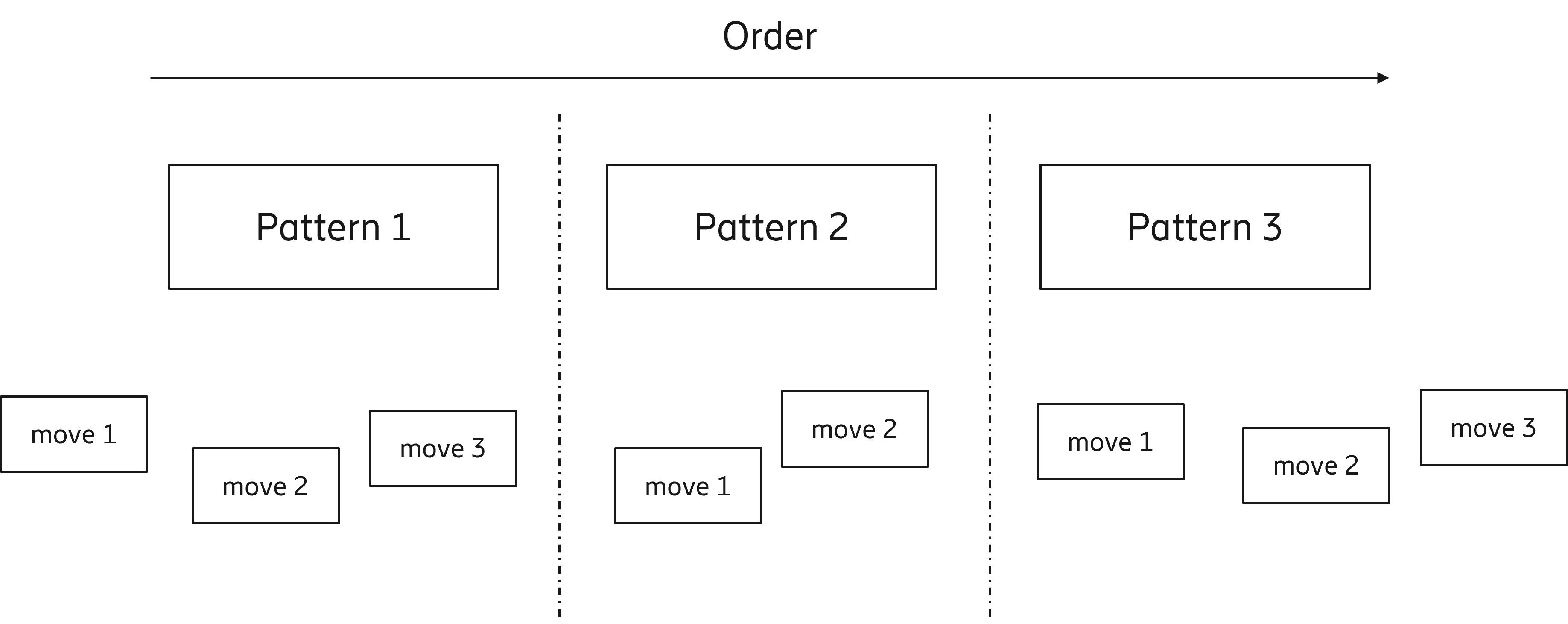
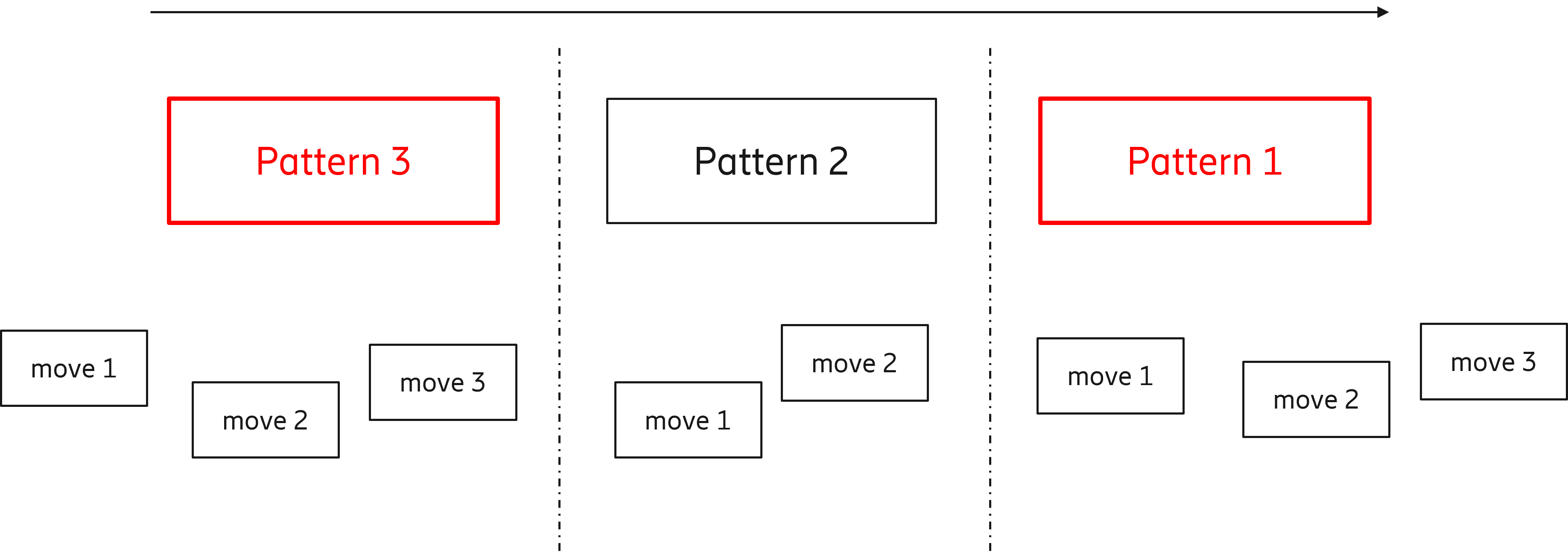
So after examining, combining and rearranging our identified patterns from previous step we come up with the solution below.

Step 5: Iterate for other objectives and patterns
If with the identified objective in the step one we cannot find the solution, we must consider changing the objective and iterate through all the steps to find the final solution.
Tips
Here, I just provide a few tips which helps you to improve your chess puzzle solving ability.
- Try to improve your knowledge base of patterns. After you see a pattern, try to play and analyze different variations of it. Replace pieces with other pieces, change the position slightly and analyze what happens. This helps with memorization as well as identifying new patterns faster.
- If you do not feel like solving a puzzle at the moment, just leave it and get yourself busy with other stuff to release mind
- Learn from other ways, lessons, playing games, studying openings, end games, middle games
- keep improving your process by continuously asking yourself how could I solve it or solve it faster?
- keep analysis after solving to see where you got it wrong, how to do it faster, which pattern you must add to your
- The key is to learn and practice to think in chunks
- To improve you must learn to eliminate the unlikely paths as fast as possible. Thinking in chunks helps a lot with that
I hope you find this article useful.Always keep improving your processes.